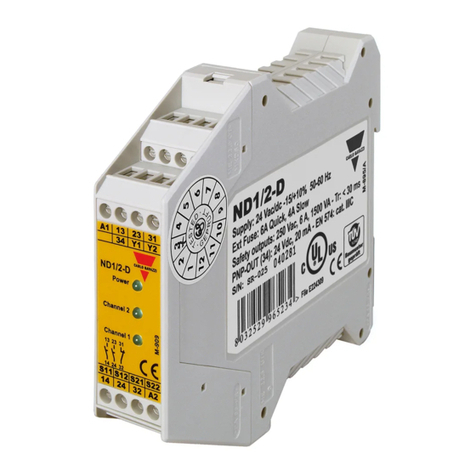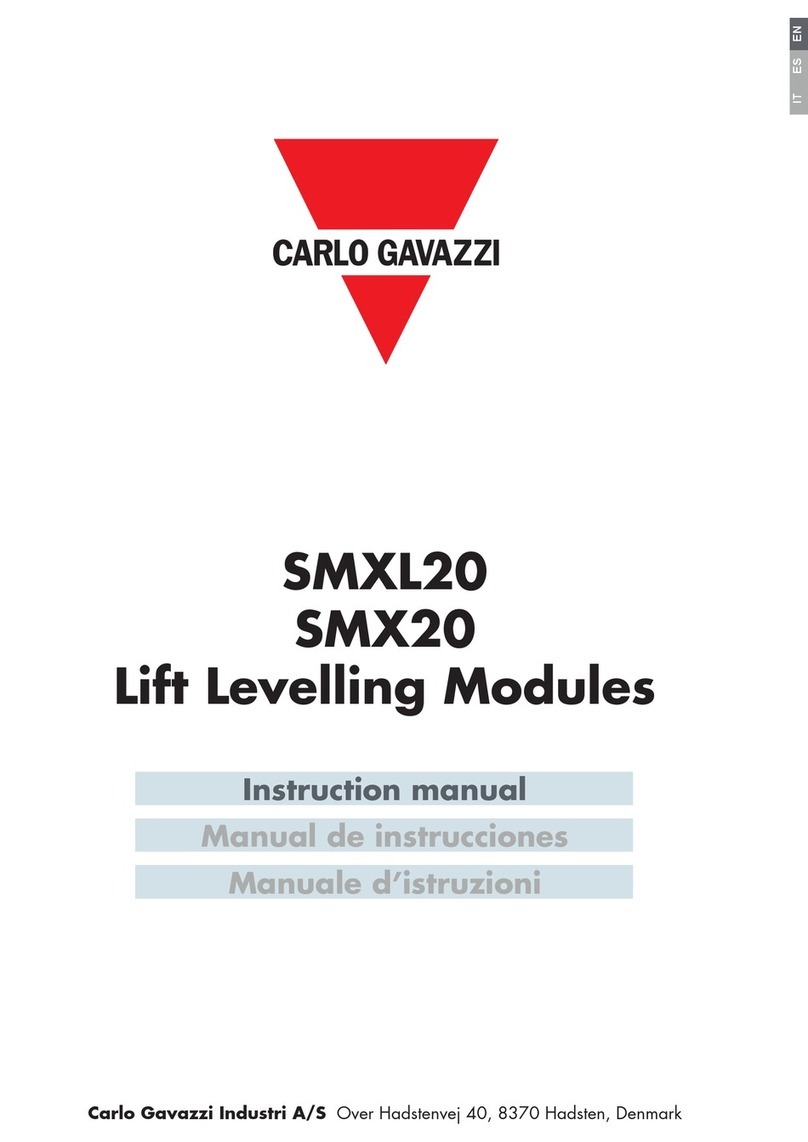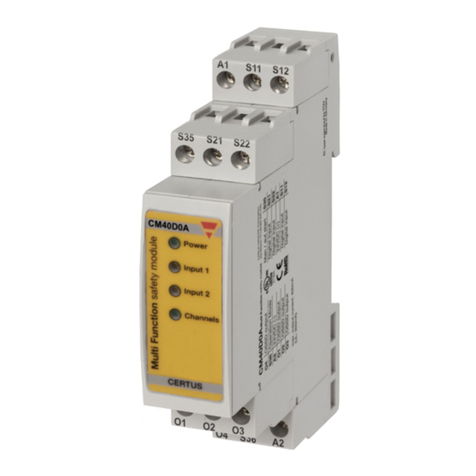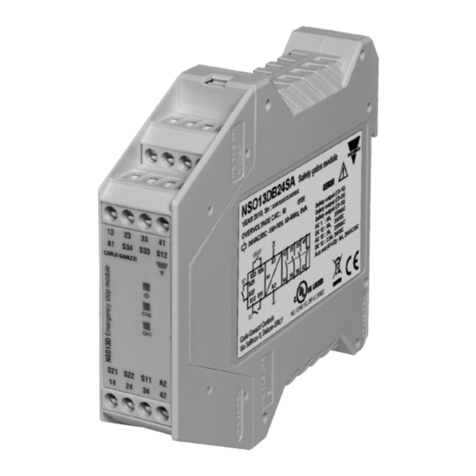
7
uscite sicure aprono ed i LED CH1,
CH2 sono spenti.
Durante la FASE 2, verificare
che, in configurazione di riarmo
manuale, il solo azionamento degli
ingressi, senza la chiusura del
contatto di START, non determini
la chiusura delle uscite sicure.
FASE 4 Opera prima su un canale
di ingresso (S12) e poi sull’altro
(S21) (solo ESPE a 2 uscite).
Rilasciare ed azionare entrambi
i contatti di ingresso (e premere
il pulsante di START, in modo
che le uscite sicure siano chiuse).
Scollegare il conduttore relativo ad
un canale di ingresso e verificare
che le uscite sicure siano aperte
ed il LED di canale relativo sia
spento.
Premere il pulsante di START,
verificando che le uscite sicure non
chiudano.
Ricollegare il conduttore staccato
e premere il pulsante di START,
verificando che le uscite sicure non
chiudano.
Ripetere per ciascun dispositivo
collegato sugli ingressi tutte le
operazioni della FASE 3.
PRECAUZIONI DI UTILIZZO
- L’ESPE deve essere installato in
posizione tale da assicurare che
l’operatore non possa raggiun-
gere la zona pericolosa quando
esistono ancora condizioni di
pericolo per l’operatore stesso.
Le norme stabiliscono le distan-
ze minime che devono intercor-
rere tra l’ESPE e la zona peri-
colosa, al fine di evitare pericoli
per l’operatore. Queste distanze
sono funzione del tempo di arre-
sto della macchina, del tempo di
risposta del modulo di controllo
(riportata nel presente manua-
le) e dell’ESPE, nonché della
risoluzione dell’ESPE stesso,
della sua eventuale distanza da
terra (nel caso di ESPE posti
in orizzontale) e della velocità
di avvicinamento dell’operatore
alla macchina.
Si raccomanda il rispetto assolu-
to delle prescrizioni delle norma-
tive citate e di tutte quelle riguar-
danti i macchinari interessati, cui
si rimanda per i dettagli.
- Il controllo di teleruttori esterni
o moduli di espansione è pos-
sibile mediante l’inserimento dei
contatti NC di controllo di questi
ultimi in serie al pulsante NO di
riarmo (oppure al ponticello di
cortocircuito, nel caso di riarmo
automatico) tra i morsetti X1-X2.
- È consigliabile collegare in serie
alle uscite sicure un fusibile,
per ridurre il rischio di saldatura
dei contatti delle uscite stesse
(vedere dati tecnici uscite).
- Non collegare mai circuiti spe-
gniscintilla in parallelo ai contatti
di uscita sicuri: non verrebbe più
garantita la funzione di sicurez-
za.

































